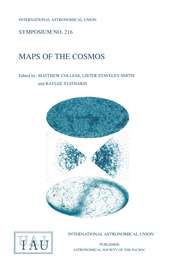Article contents
The Nucleus of NGC1275
Published online by Cambridge University Press: 04 August 2017
Extract
The bright radio nucleus 3C84 of the peculiar galaxy NGC1275 was among the first sources studied by VLBI techniques sixteen years ago (Clark et al., 1968). Early observations at short centimeter wavelengths using arrays of up to four telescopes (Schilizzi et al., 1975, and references therein) demonstrated the presence of structure significantly more complex than that seen in other strong compact objects, but were insufficient to determine the brightness distribution with the relatively primitive methods then in use. By the time of the most recent international VLBI symposium (Aug. 1978, in Heidelberg, FRG), Pauliny-Toth et al. (1976) had succeeded in modelling the structure seen by a 4-station transatlantic array, revealing three distinct bright emission regions aligned in position angle −9°, and connected by non-colinear, more diffuse features. Further observations and a reanalysis of earlier data by Preuss et al. (1979) confirmed previous inferences that the three major condensations remained stationary but varied in brightness.
- Type
- Research Article
- Information
- Symposium - International Astronomical Union , Volume 110: VLBI and Compact Radio Sources , 1984 , pp. 137 - 140
- Copyright
- Copyright © Reidel 1984
References
- 3
- Cited by


